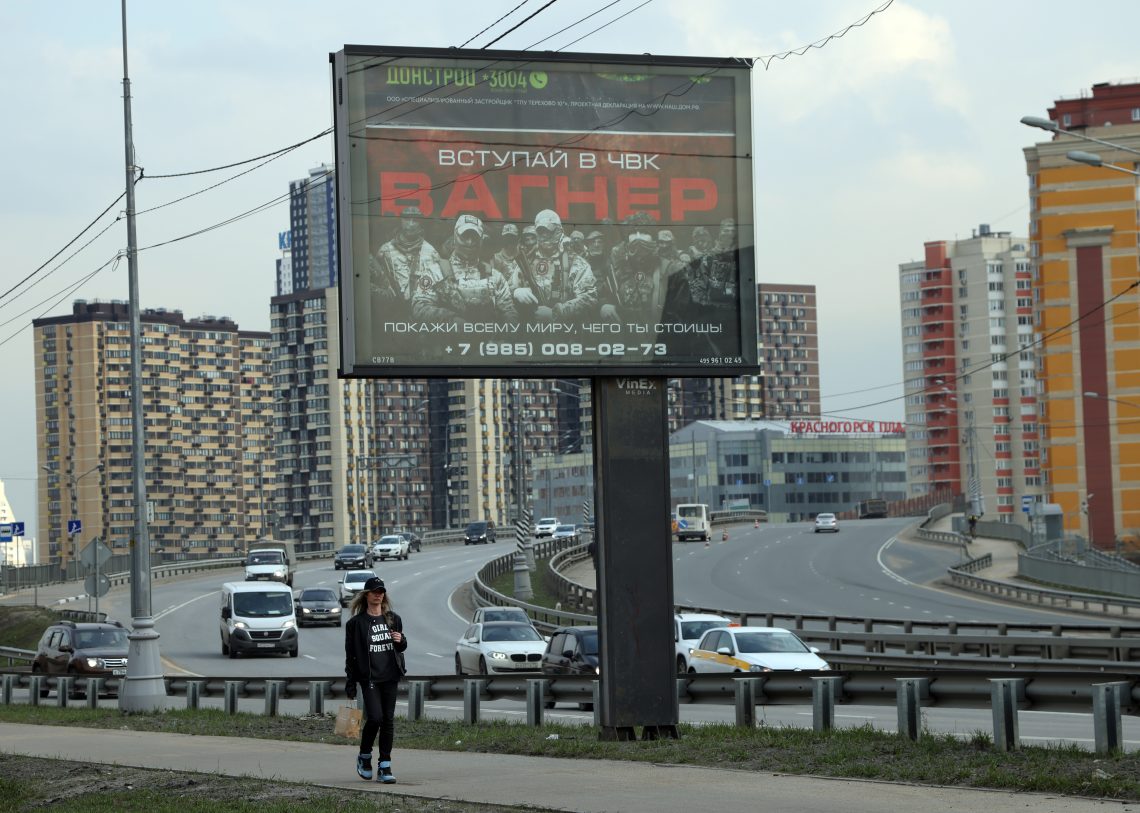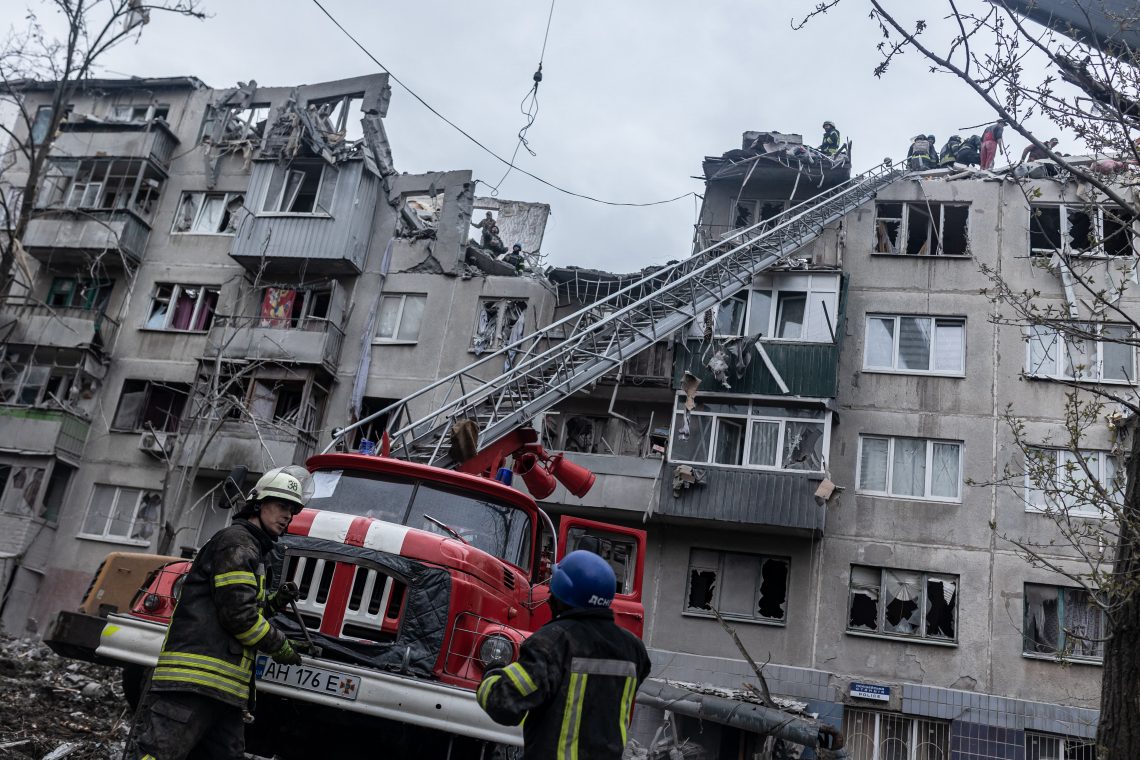Russia’s emerging war economy
President Vladimir Putin’s go-for-broke strategy in the invasion of Ukraine may yet trigger his political demise.

In a nutshell
- The shift to a wartime economy will cause long-term political and economic harm
- Russia’s military production cannot compete with the West in quantity or quality
- Greater authoritarianism and repression may spur a violent backlash in society
With Russia’s full-scale invasion of Ukraine in its second year, the Kremlin is planning for a long war. This will require the mobilization of additional soldiers and a fundamental shift to a war economy. While neither step is likely to secure victory, both will have highly negative consequences.
Mobilization will create economic and political problems for President Vladimir Putin. Given that much economic activity in Russia remains dependent on manual labor, production will suffer as more men enter the military. Rising discontent could even trigger violent protests, although the chances remain low given the Kremlin’s police state and draconian laws punishing government critics.
The longer the war continues, the more that tensions will rise between the military imperative for more soldiers and the political need to placate Russian society. Thus far, the Kremlin has been able to find the middle ground.
The weaknesses of autocracy
The consequences of a war economy are less controversial yet more detrimental. The shift is required to keep fighting, yet such a transformation means a return to pervasive authoritarian control. At times of major armed conflict, even democracies have intervened in the market to ration consumer goods and reorient. But after the crisis, democracies remove vertical command structures and restore essential freedoms. Autocracies do not.
Russian society has historically been ruled by vertical commands rather than horizontal governance. From the days of old Muscovy onwards, the main purpose of Russian autocracy has been to ensure that the state will prevail against wealthier outside enemies. This has been achieved by placing de facto ownership of all resources in the hands of the rulers, and by making all subjects dependent for their survival on accepting servitude.
When the King of England wanted to make war on France, he first had to bargain with the nobles. Their price could at times be steep and bargaining lengthy. When the Grand Prince of Muscovy wanted to go to war, he simply gave the order. This governance transformed a resource-starved outpost on the Moskva River into a Russian Empire that in turn became the Soviet Union, which at its peak had rough military parity with the United States.
The price, however, was staggering in terms of stunted economic development. The cost today will also rise in the standoff with adversaries that are more powerful than any that Russia has ever faced. Civilian life will deteriorate in education, healthcare, housing and consumer goods to ramp up military production. A return path will be slow and arduous.

A step back to the USSR
According to the military doctrine of the Soviet Union, the economic system was designed to be able to support fighting four major wars at the same time. “Structural militarization” put the economy in a state of constant readiness for military production. It meant that all enterprises had vast stocks of fuels, raw materials and intermediate goods, ready to be activated for a swift response in ramping up the supply of armaments.
Some estimates suggested that the share of Soviet gross domestic product (GDP) spent on the military exceeded that of the U. S. by seven times. The cost to the civilian economy was of such a magnitude that German Chancellor Helmut Schmidt in 1988 denigrated the USSR as an “Upper Volta with missiles.’’
After the end of the Cold War, Moscow undertook reforms to introduce liberal democracy and a rules-based market economy. The outcome was a form of decentralized robber baron capitalism that succeeded in breaking up the military-industrial complex. Military supplies were sold off and factories tried to shift to civilian production. But the changes failed miserably in introducing the institutions of a working market economy, such as secure property rights. In 1998, the ruble collapsed and financial markets went into meltdown.
Increasing pressure on Russia’s oil industry
The rise of Vladimir Putin after failed market reforms
After the crash, many believed that Russia would not recover. Then came a spike in oil prices and the reintroduction of authoritarianism under Mr. Putin. The result was a Potemkin facade of economic success that impressed foreign media and investors. But it was a predatory system that lived mainly off the spoils of hydrocarbon revenues. The institutions of a market economy and democracy did not take root. The late U.S. Senator John McCain used to refer to the Russian Federation as “a gas station masquerading as a country.”
A return to a war economy will require oligarchs to give up part of their wealth and all industries to serve the state’s military production needs. A rising share of a shrinking GDP will go to the production of perishable and increasingly obsolete weaponry.
Yet this shift might not help much. Russian military hardware has performed badly in Ukraine. Despite having had unconstrained access to German high technology for decades, Russia’s high-precision weapons have proven to be seriously inadequate. Most of the blame goes to pervasive corruption and incompetent management. The ongoing brain drain will exacerbate the problems as young experts in the tech sector leave the country, some of them for good.
The surge in military production will produce larger volumes of poor-quality weapons. Russia has no chance of reaching parity with the U.S. Yet, as Joseph Stalin supposedly said, quantity has a quality of its own.
Scenarios
The main question is how long the mass production of inferior Russian military hardware can be sustained.
One scenario is that the growing burden will cause the Russian Federation to disintegrate. There is ample precedence of defeat in war leading to the collapse of the Russian state, in 1917 and again in 1991. In both cases, there were no horizontal institutions of civil society able to step in when the regimes failed.
A driving force could be ethnic unrest. The fact that a disproportionate number of minorities have been killed in Ukraine is provoking resentment against ethnic Russians. Secessionist demands may follow, particularly in the volatile North Caucasus. And this time, there will not be enough Russian troops to contain the conflagration.
Local elites may increasingly refuse to share their resources with the federal center. This will threaten to bring down the complex system that has kept the federation together. Although the Russian Federation may retain the formal appearance of statehood, real power will devolve to local fiefdoms, who will ensure that they have sufficient repressive mechanisms to safeguard their own revenue streams. Such an event would end manpower mobilization and mass military production.
The more likely scenario is that the federal center will hold and that the regime will retain sufficient power to defeat challenges from below. But the Kremlin will have to hold the fort as income dwindles and expenditures balloon. Russian state revenues have traditionally been derived from oil, gas, weapons and gold. The values are volatile. Price declines will make the burden of greater military spending felt more acutely.
Given the Russian refusal to seriously pursue peace, sanctions will not be lifted soon. No matter how much some Western governments would love to restore normalcy, sanctions are easy to impose but difficult to lift.
In this situation, the outcome for Russia will be akin to the one ending the Korean War – an armistice with no peace and international isolation of North Korea coupled with increasing economic obsolescence. The domestic implications will be very much like high Stalinism – a weaponized economy combined with xenophobia and closed borders. Mass repression will rise at home as security forces hunt for enemies within. The number of officials falling out of windows to their deaths will rise.
Former President Dmitry Medvedev has revealed the pressure that will be applied to military industries. Mr. Medvedev quoted from a telegram sent by Stalin to factory managers during World War II, where the dictator threatened that, in the event of missed production targets, he would “crush you like criminals who neglect the honor and interests of the Motherland.”
Intensified internal repression will harm human capital development. Many of the best and brightest have fled the country, and those who remain will be forced into an emerging culture of virulent nationalism. Weapons training and patriotism are already on the school curriculum and the emergence of a Russian “youth army,” wearing distinctive red berets and light brown uniforms, has fascist overtones.
China is the key player in determining which of these two scenarios prevails. As evidenced during his recent visit to Moscow, President Xi Jinping is quite happy to provide warm words, but less keen on actively helping the Russian war effort in Ukraine. His current view of the Russian economy appears to be that it has been reduced to a fire sale, where everything must go at rock-bottom prices.
This is a balancing act. While greater predation on Russian raw materials may produce substantial short-term gains, overdoing it may push the country into the abyss. Beijing does not seem overly concerned. Those who have feared an emerging alliance between Russia and the Middle Kingdom may want to think again. The first thing that President Xi did after leaving his “dear friend” in Moscow was to call a summit between China and four of the five Central Asian states, without inviting Russia to the party.










